At Grammy Museum’s Songwriters Hall of Fame Exhibit, the Tunesmiths Are the Superstars
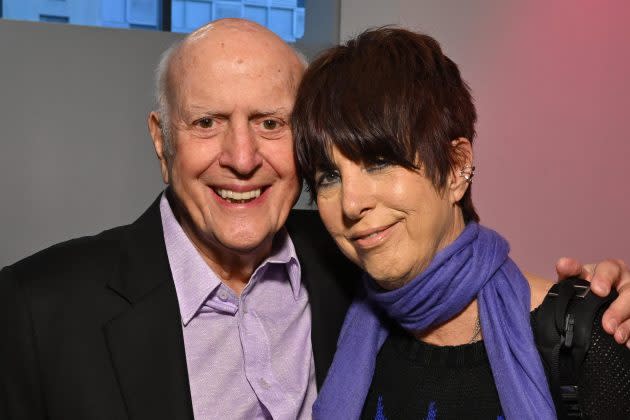
With a new exhibit celebrating the Songwriters Hall of Fame that has opened at the Grammy Museum in downtown Los Angeles, the facility finally has a space in which the pen is definitively mightier than the sword. Although there are some axes on view, too — but this is an exhibit where attendees are at least as likely to ooh and aah over Sammy Cahn’s typewriter or Burt Bacharach’s hand-written scores as they are Tom Petty’s guitar or Jimmy Jam’s keytar.
The range of artifacts on display in “The Power of Song: A Songwriters Hall of Fame Exhibit” runs a gamut from from Irving Berlin’s piano and Cole Porter’s walking stick to material contributions from contemporary writers like Benny Blanco and Imagine Dragons’ Dan Reynolds. In-between those poles, you can find handwritten lyrics and sheet music, telegrams, production notes, cassette demo tapes, Oscars, and — lest a writers’ exhibit seem like too much of a paper chase — even some jackets worn by more sartorially flashy writer-performers like John Legend and Annie Lennox.
More from Variety
Recalls Jasen Emmons, the chief curator at the Grammy Museum, “we had started this relationship with the Songwriters Hall of Fame in 2010, where we had a small display on the fourth floor. Then a few years ago, they approached us and said, ‘Hey, we’re coming up on our 50th anniversary. Could we do something to celebrate?’ That got interrupted by the pandemic, but then this exhibit grew out of that. So really, it’s looking at the power of song, and celebrating the incredible inductees that are in there.”
Says Songwriters Hall of Fame CEO-president Linda Moran, proudly, “That (former space) was 15 square feet, and then this from now to Labor Day, is 3000.” (After the exhibit moves out of the Grammy Museum in the fall, something may be in the cards for Nashville, next.)
Emmons particularly enjoys having some of the handwritten lyrics that have crossed out lines indicating real-time edits. “We always prefer when there’s some sense of process, or people don’t get the sense that these just come out fully born.” Among the lyrics or sheet music on display are drafts of Mariah Carey’s “Fly Like a Bird,” Diane Warren’s “How Do I Live,” Bacharach’s “Alfie” and “Walk On By,” Petty’s “Mary Jane’s Last Dance,” Cyndi Lauper’s “Time After Time,” the Bangles’ “Eternal Flame,” Jimmy Webb’s “Wichita Lineman,” Alan Menken’s “Little Shop of Horrors,” Steve Dorff’s “Murphy Brown” theme song and Taylor Swift’s “White Horse” and “Run.” (The two Swift contributions, unlike most of the other lyric sheets on view, are facsimiles, not the originals — hey, they can’t guard this thing quite like Fort Knox.)
Emmons credits Songwriters Hall of Fame CEO-president Linda Moran for making sure the exhibit is as packed as it is, saying a single phone call from her was worth 10 times as much cajoling from the museum itself. “Linda’s fantastic, honestly,” says Emmons. “When we’re doing the outreach for the artifacts, often you get people who are like, ‘I don’t have time…’ But if you call an artist and say, ‘Hey, Linda would like you to loan to this exhibit,’ they’d be like, ‘I’ll do it. What do you need?'”
The Songwriters Hall has been very New York-centric, with the annual induction ceremonies always taking place there without fail, so this is a chance for west coast writers to feel celebrated, without having to get on a plane, as many of them did at a cocktail reception that was held at the Grammy Museum at the end of April.
“Songwriters are (treated as) second-class citizens. usually,” says Moran, “so ours is the the induction that they really, really want, you know? I can give you a list of them who are (also) inducted in the Rock & Roll Hall of Fame, and I’m not knocking them — I’m just saying that this is very important to them, getting honored for where your heart and soul is, and where you started, which was your songwriting, by your peers.” (Moran is happy to see “every genre being inducted” in this June’s class of honorees, which will include Sade, Snoop Dogg, Jeff Lynne, Liz Rose, Teddy Riley, Gloria Estefan and Glen Ballard.)
Doing a walk around the Grammy Museum space, Emmons pointed out some of his favorites.
“This is actually one of Irving Berlin’s two what he called ‘trick pianos,'” says the curator, pointing to the first thing people see as they enter the space. “It’s a transposing piano. He was self-taught — music theory was not his strong suit. He preferred to play the black keys, and actually F Sharp was his favorite. So he had this piano made where he could push the center pedal and then use that mechanism to shift into other keys, because doing it on his own was not easy for him. A local lender owns this now, and it’s great to be able to have one of his pieces.”
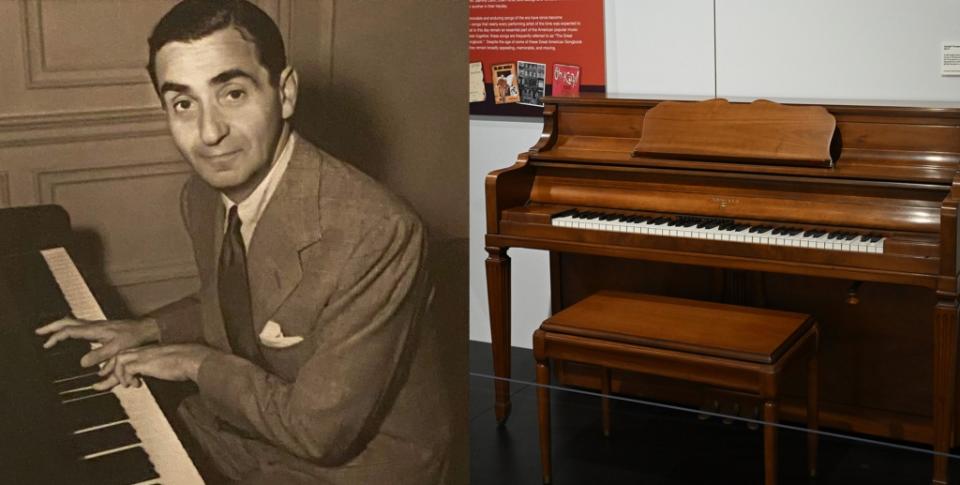
Moving on, he pointed to the typed lyrics for “Like a Virgin,” which even have the tempo noted — not the tempo that eventually was used. Co-writer Billy Steinberg, who wrote the tune with Tom Kelly, “had just come off like a messy breakup and was finally feeling better about it, and then wrote those lyrics with the idea of feeling like, ‘OK, I’m starting over. It’s fresh.’ They both thought, ‘Oh, this is gonna be this beautiful ballad.’ They took it to (Warner Bros. Records head) Mo Ostin, who was like, ‘Oh my God, this is gonna be perfect for my new artist, Madonna.’ And of course she always sort of thought it was funny that she was singing a song called ‘Like A Virgin,’ and never imagined that it would become one of her signature songs.”
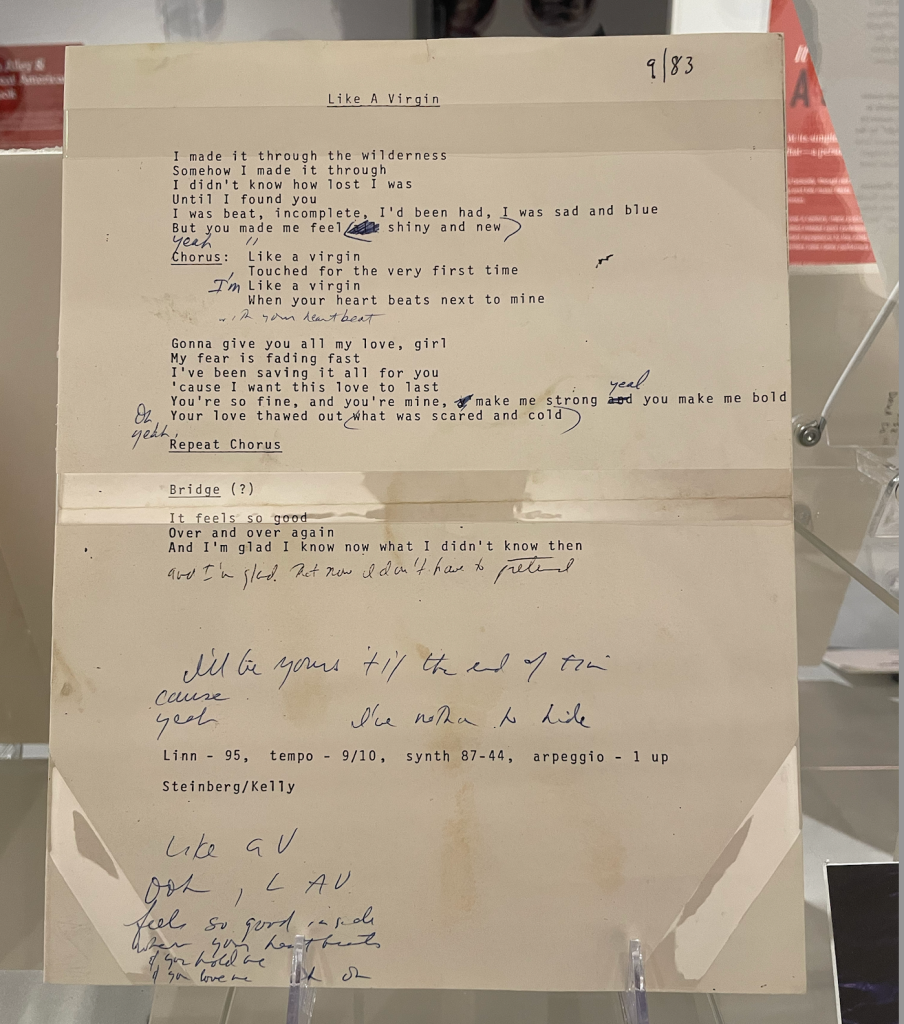
Doing this kind of exhibit with a focus on the writers of today or the future could be problematic, given the digital nature of most songwriting today. “When we did a New York exhibit,” says Moran, “the writers who went to see it were most impressed with the handwritten lyrics because nobody does that as much anymore.” She qualifies that: “I do hear that there’s a certain group of young writers now going back to handwriting them.”
Jimmy Webb was getting a look at his own artifacts on display during a recent preview, which range from the handwritten words to the Glen Campbell smash “Wichita Lineman” — which at least a few students of pop history will claim is the greatest song ever written, or close to it — to a jacket he wore in the 1960s. “Manuel (of local Nudie’s fame, before he set out on his own in Nashville) used to make all the clothes for Glen, so I used to envy all of Glen’s clothes. So it’s kind of a symbol of my fascination with that sartorial splendor.”
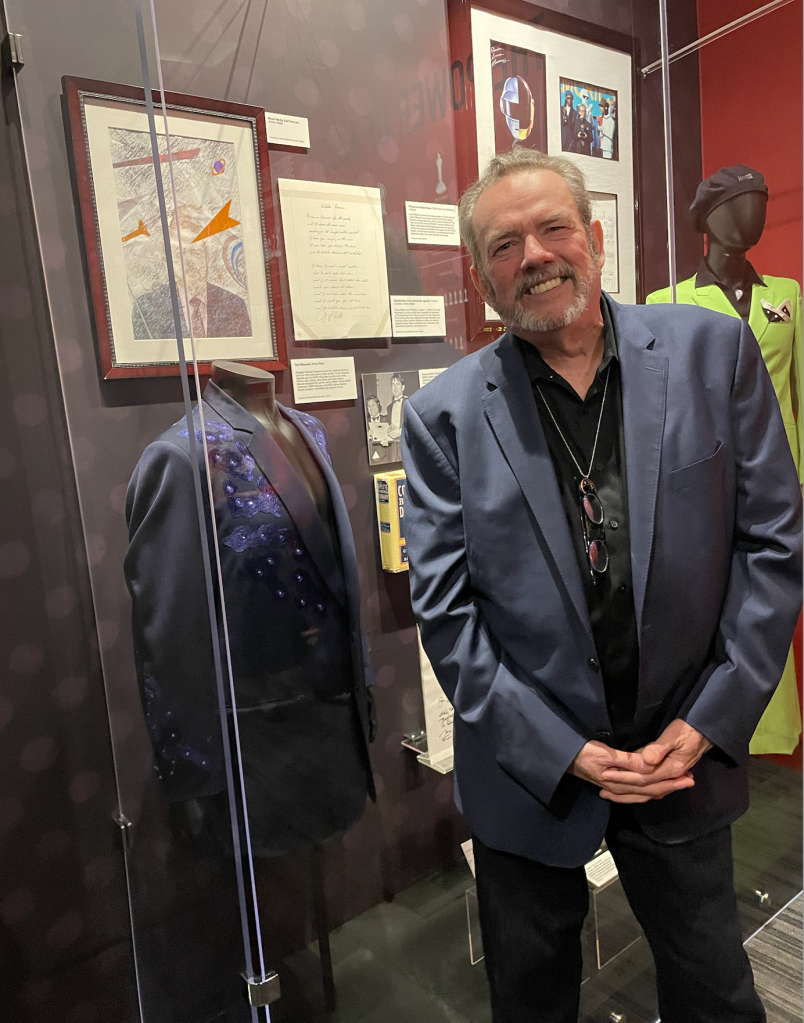
Webb’s wife, TV producer Laura Savini, piped in. “The one thing he’s not mentioning is his rhyming dictionary, which I had to pry out of his hands. I said, ‘They will only have it for a very short while!'”
Webb nodded to the weathered book in the display case. “I can’t write songs without that, I’m so used to it, and I know exactly where the rhymes are,” he said. “I’s sophisticated because it does double rhymes, which is two syllables, and three rhymes, which is three syllables that rhyme. Which hardly ever comes up in America.” He recalls the era of Danny Kaye as being inspirational in that regard: “When I was a kid, his material was so intricate and funny. As we modernize and streamline, some of the intricacies of lyric writing got left in the door.”
Does he have a substitute rhyming dictionary while this is on display? “I haven’t been writing. I’m waiting to get it back — that’s my excuse,” he claimed. Then he owned up to being able to go on without it: “No, I, I’m actually writing songs for a new album, so who knows.”
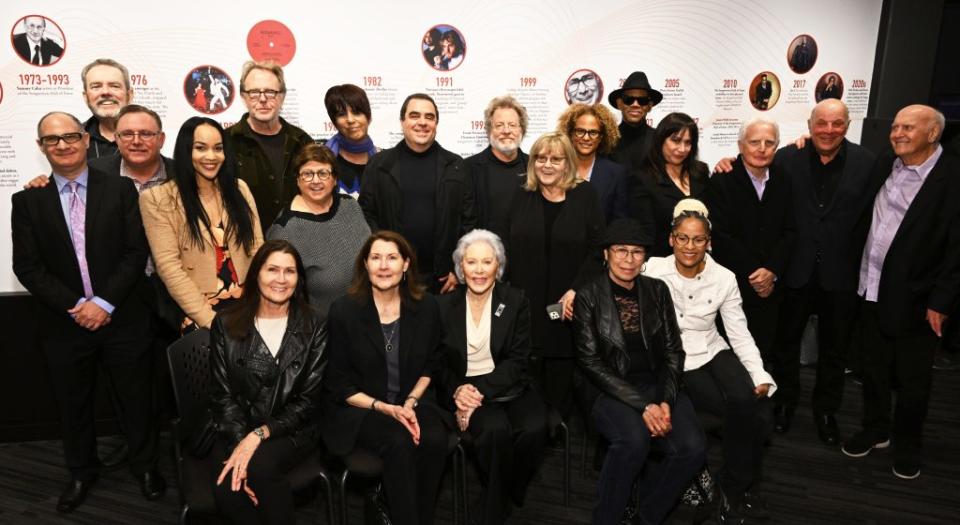
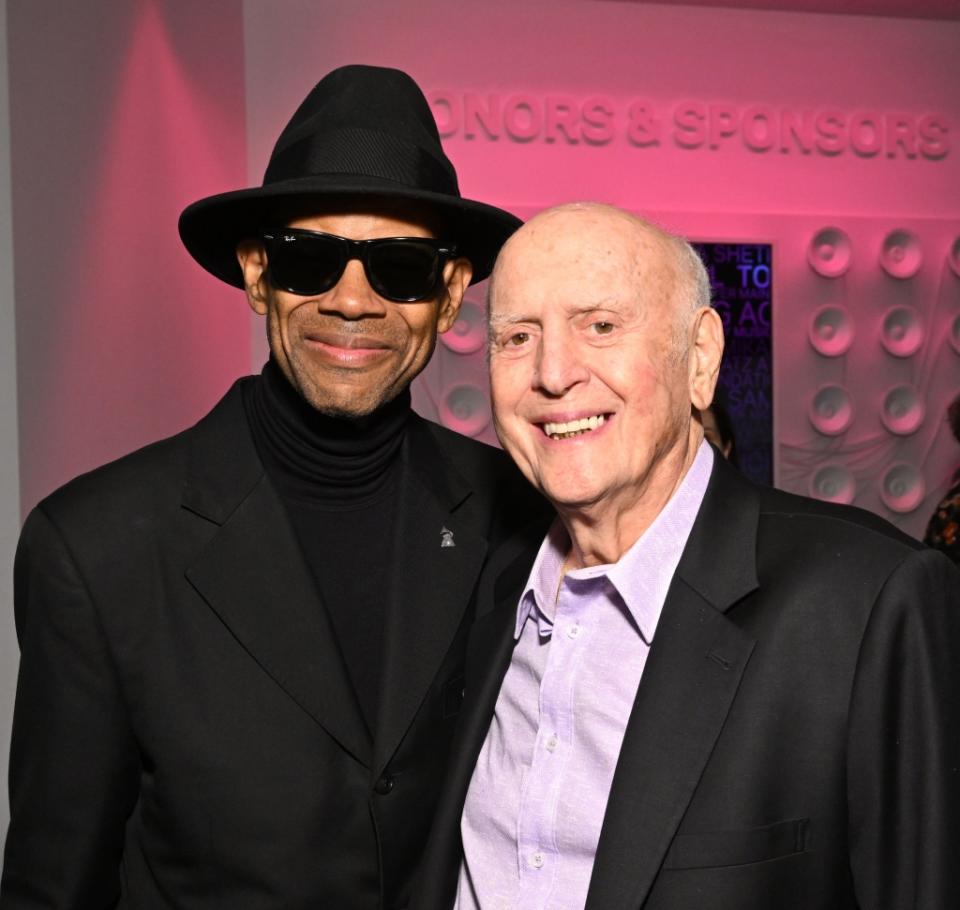
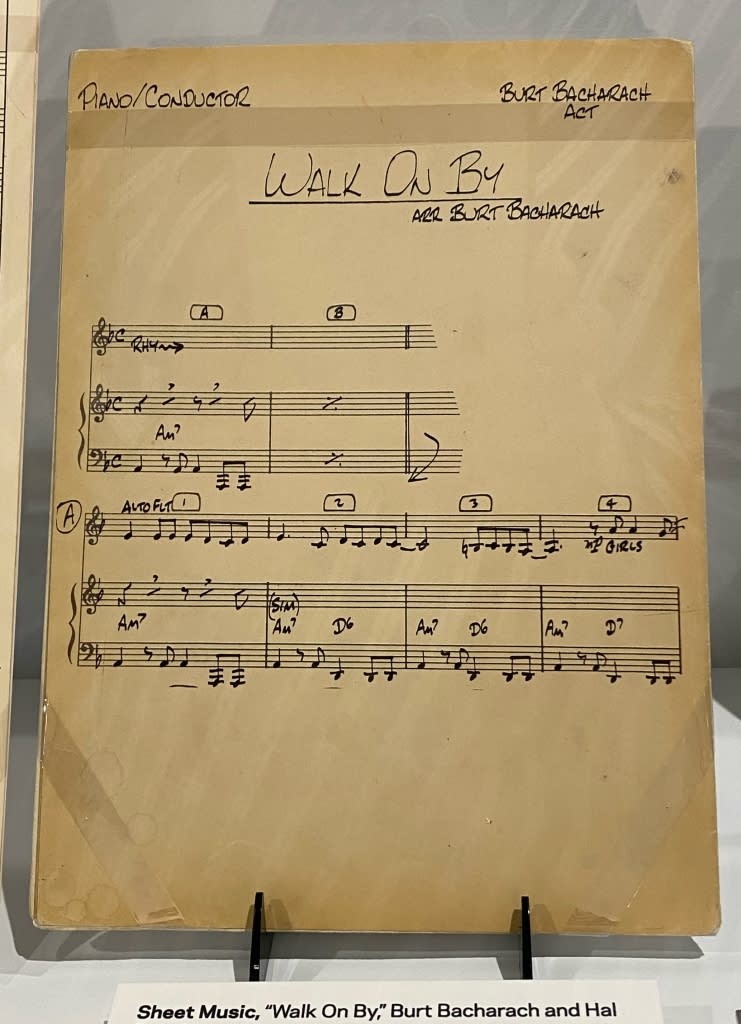
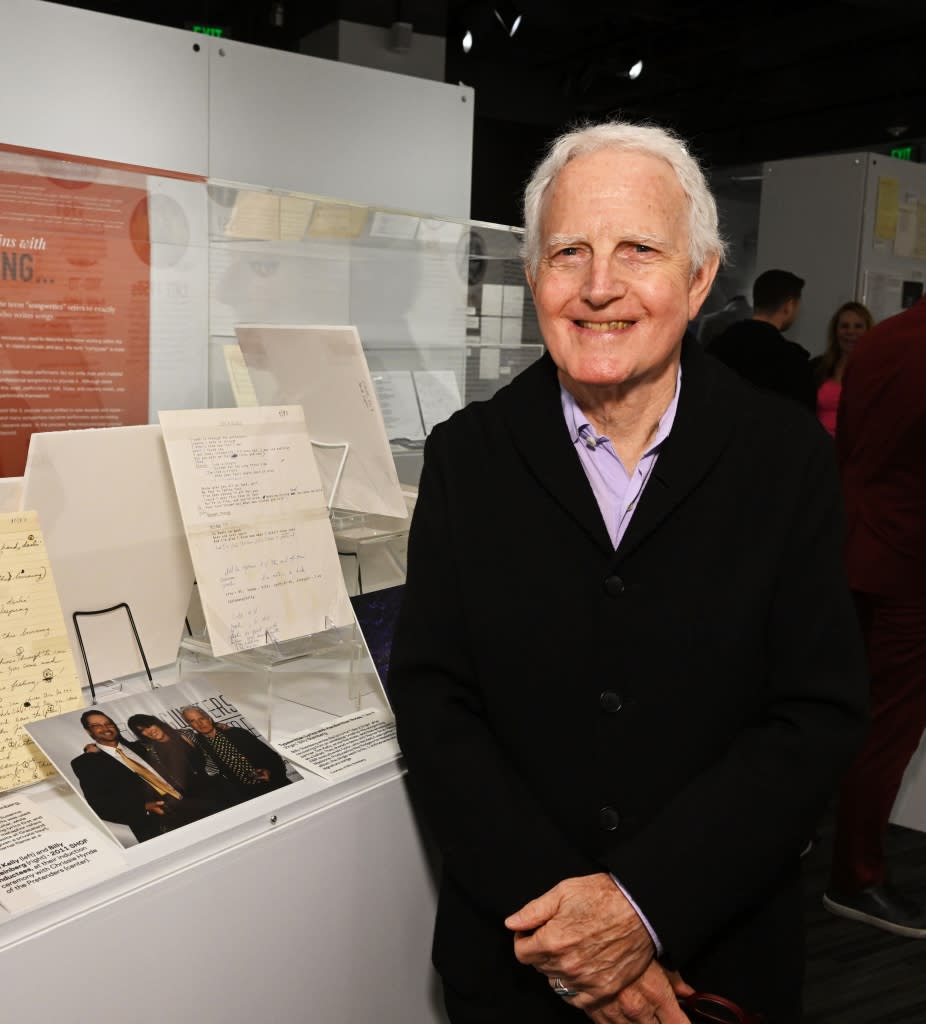
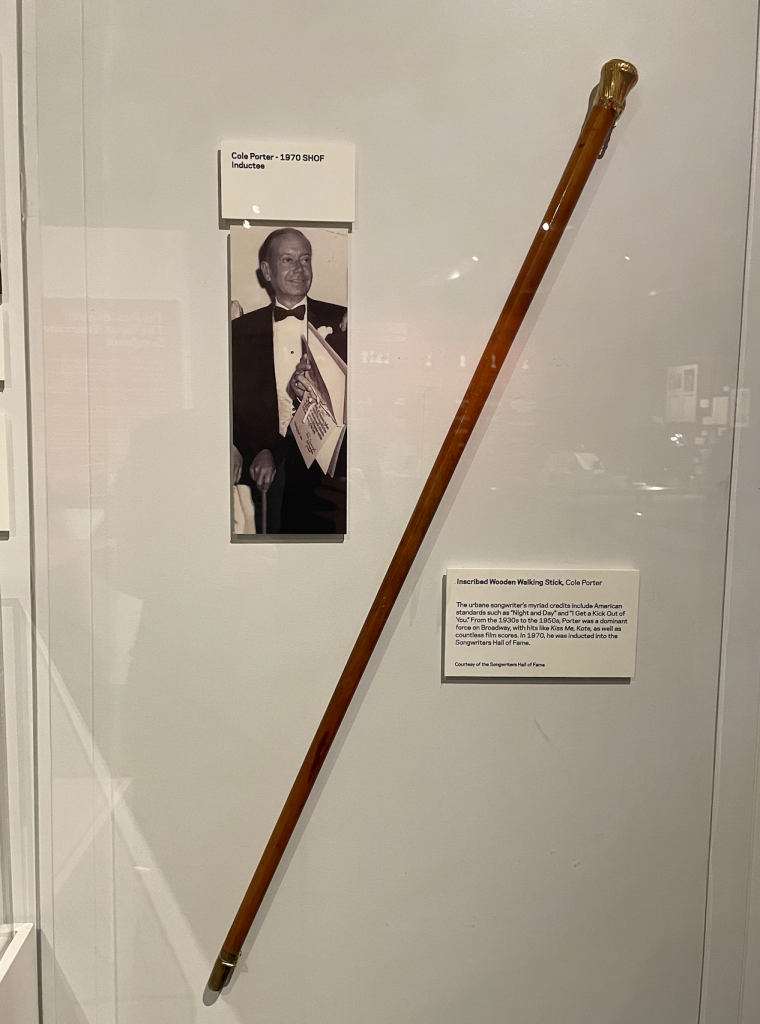
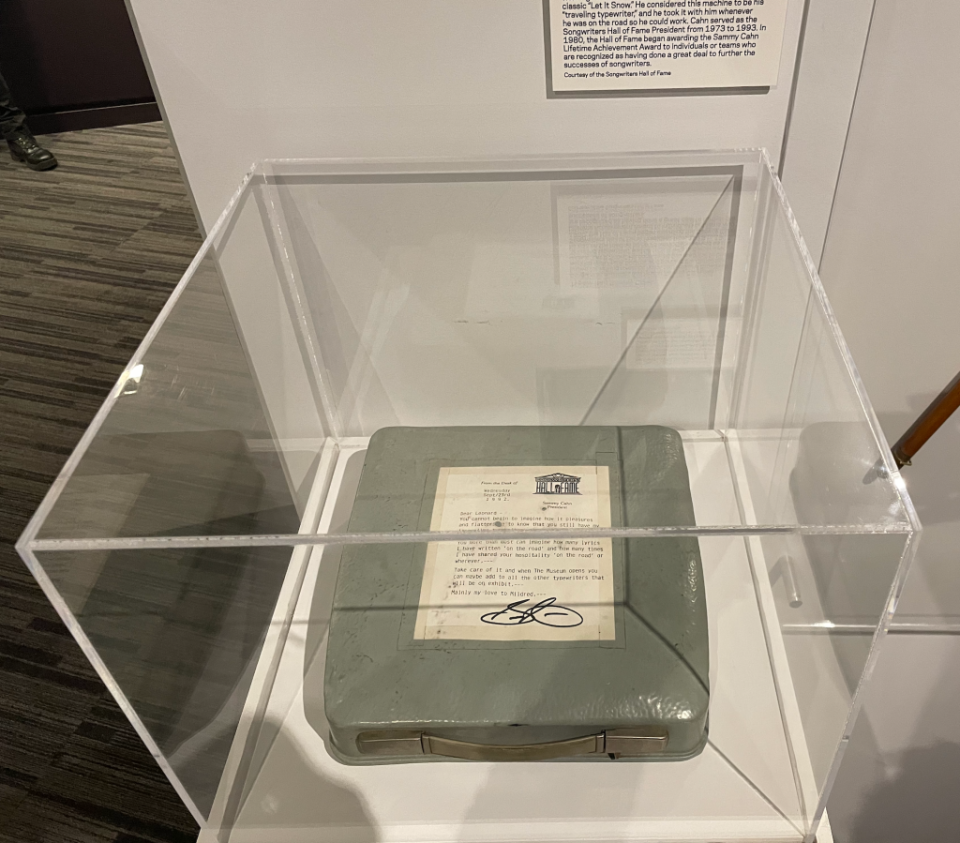
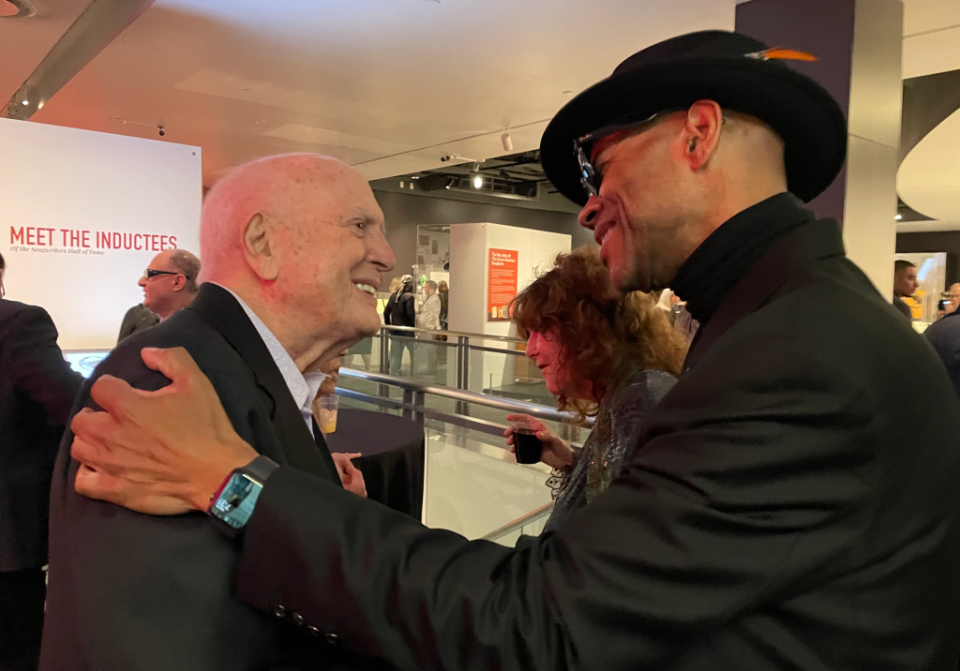
Best of Variety
Tony Predictions: Best Musical -- Four Stand Poised to Give ‘Kimberly Akimbo’ Some Competition
This 'Fast and Furious' Arcade Cabinet Allows You to Step Behind the Wheel as Dom Toretto
Sign up for Variety’s Newsletter. For the latest news, follow us on Facebook, Twitter, and Instagram.

